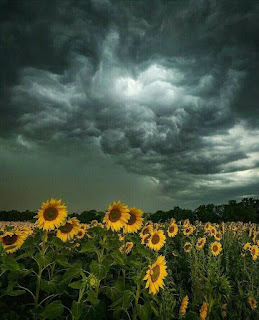At this point in a summer full of excessive heat and astonishing amounts of rain (depending on where you live, or if you live in southern Arizona, where we’ve had both), I thought we could all enjoy a relaxing blog about gorgeous flowers that bloom in July with interesting factoids about each. I hope it works for you.
DID YOU KNOW that Aztecs ate Dahlias?
DID YOU KNOW this flower has two names?
Apparently the ancient Greeks thought this flower looked like a dolphin, so they named it “Delphinium”. Fast way forward to when they were introduced to Tudor England during the mid-1500s, and the name became “Larkspur”. Apparently those crazy Tudors thought it looked like the spurs/foot of a lark. I guess that comparison can be made (more than to a dolphin, in my opinion), but they clearly spent a lot of time looking closely at this plant to come to that conclusion. Here is a piece on lark foot anatomy that you can check out to see if you agree with the Tudors. By the way, this plant is toxic and can be a threat to livestock.
DID YOU KNOW that the Gardenia was named for a gardener named Garden?
DID YOU KNOW that head of a Gerber Daisy is made up of a bunch of little flowers?

This cheerful and popular plant has a secret that most people never notice – their blooms are made up of hundreds of individual flowers. This complexity is all the more notable since they seem so simply pretty at a glance. Here are some phenomenal photos that illustrate the astonishing complexity of these blossoms. Gerbers are native to South Africa and were first “discovered” by a Dutch botanist who named them for a German colleague (I guess this naming-after-a-friend thing was common), Traugott Gerber. But it wasn’t until 1882 that a scientific description was published by J.D. Hooke and they began to gain a following. For more interesting tidbits on these daisies, check this out.
DID YOU KNOW that Hydrangea colors are a reflection of the pH of their soil?
Hydrangeas come in many types, but when it comes to color you’ll find even more variety. And while you can’t change the shape of the hydrangea you’re growing; you can change the color. These flowers take their cue from the soil they’re in and the pH level therein determines the color. If the soil is alkaline (pH of 7-14), the color will be in the pink range; with an acidic soil (pH of 0-7) there will be bluer blooms. So, if you want to change colors, adjust pH accordingly by adding aluminum sulfate for blue and lime for pink. But you may want to consider carefully what color to grow if you plan to gift them as the colors carry all types of meanings (see some here). Not to mention that there is a tradition that hydrangeas symbolize boastfulness as they produce a lot of showy blooms but very few seeds to build on (ouch!).DID YOU KNOW that Sunflowers move according to their age?
Sunflowers track the progression of the sun across the sky by moving their heads to face the sun. But this movement is far from automatic. On cloudy days, no matter how dense the cloud cover, immature sunflowers will find the sun’s location through the clouds and track all day long. Mature sunflowers, on the other hand, will not bother with this exercise. They stay where they are until the sun returns. In time, as mature sunflowers mature even further, they will stop tracking even on sunny days and simply face east all day. This sun-tracking movement is known as heliotropism and many plants use a form of this as a way to maximize available sunlight, especially when in their growth stage. Watching sunflowers move can be fun, unless you have helianthophobia, and then you won’t want to see it.












No comments:
Post a Comment